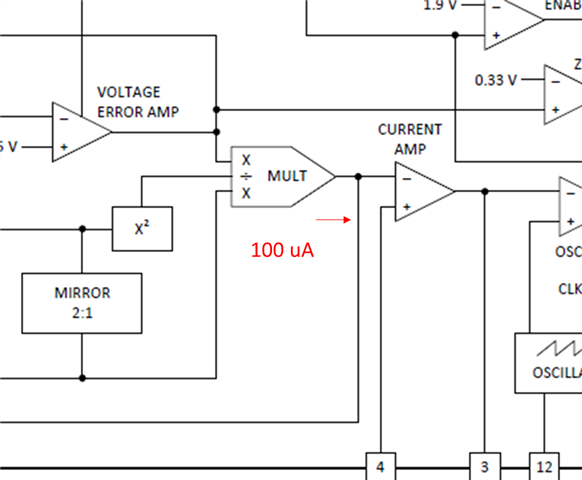Hi,
It is said in SLUS395K that maximum multiplier current is 315 uA for Figure. 9 but with RAC given as 750kOhm, IAC at Vmin of 85 V becomes 158 uA. If V_VFF is a 2:1 current mirror connected to the RC, then magnitude of VFF voltage becomes 2*IAC_min*(1/C/s) which is 0.38 V at low line.
Considering V_VAout of 5.5 V and K of 1, max current is 4.9 mA from equation (14) which is way higher that 315 u A. Which parameter am I entering wrong?




